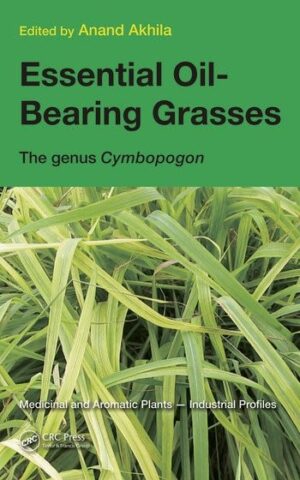The thirty-third volume of Advances in Botanical Research incorporating Advances in Plant Pathology includes five articles covering a broad range of subjects of interest to plant scientists.
In nature, plant organs are invariably associated, to a greater or lesser extent, with one or more endophytic fungi. The review by Kriel et al. takes a fresh look at foliar endophytes, particularly of gymnosperms, and considers their potential significance in latent disease, and in moderating pathogenesis and other possible mutualistic effects.
Organs of terrestrial plants carry out a variety of movements to optimize their utilization of environmental resources. Light signals are particularly significant and the review by Koller considers a number of aspects of phototropic organ movements. The study of one key function of root systems, anchorage, has been relatively neglected. The article by Ennos reviews how botanists have taken inspiration from materials science and engineering piles theory and combined this with novel experimental techniques to produce a more interdisciplinary synthesis of anchorage mechanics.
The importance of sulphur in promoting yield, quality and stress resistance parameters in plants has been highlighted by the recent increased problems of S-deficiency in agriculture. The article by Hawkesford and Wray reviews the present status of the molecular genetics of sulphate assimilation and outlines possibilities for the manipulation of these pathways. Of the fungal diseases of cereals, the eyespot diseases caused by Tapesia spp. Have been less well studied and their economic importance has been uncertain. The article by Lucas et al. reviews progress made over the last 15 or so years in improving our understanding of many aspects of this fungus. This has altered our perceptions of its significance and helped in establishing it as a model for trash-borne cereal pathogens. The thirty-third volume of Advances in Botanical Research incorporating Advances in Plant Pathology includes five articles covering a broad range of subjects of interest to plant scientists.
In nature, plant organs are invariably associated, to a greater or lesser extent, with one or more endophytic fungi. The review by Krielet al. takes a fresh look at foliar endophytes, particularly of gymnosperms, and considers their potential significance in latent disease, and in moderating pathogenesis and other possible mutualistic effects.
Organs of terrestrial plants carry out a variety of movements to optimize their utilization of environmental resources. Light signals are particularly significant and the review by Koller considers a number of aspects of phototropic organ movements. The study of one key function of root systems, anchorage, has been relatively neglected. The article by Ennos reviews how botanists have taken inspiration from materials science and engineering piles theory and combined this with novel experimental techniques to produce a more interdisciplinary synthesis of anchorage mechanics.
The importance of sulphur in promoting yield, quality and stress resistance parameters in plants has been highlighted by the recent increased problems of S-deficiency in agriculture. The article by Hawkesford and Wray reviews the present status of the molecular genetics of sulphate assimilation and outlines possibilities for the manipulation of these pathways. Of the fungal diseases of cereals, the eyespot diseases caused byTapesia spp. Have been less well studied and their economic importance has been uncertain. The article by Lucaset al. reviews progress made over the last 15 or so years in improving our understanding of many aspects of this fungus. This has altered our perceptions of its significance and helped in establishing it as a model for trash-borne cereal pathogens.
Advances in Botanical Research
$ 180
Author: J. A. Callow
Vol/Edition: Volume 33
Isbn: 9780120059331
Lang: English
Year: 2000
Publisher: Elsevier




